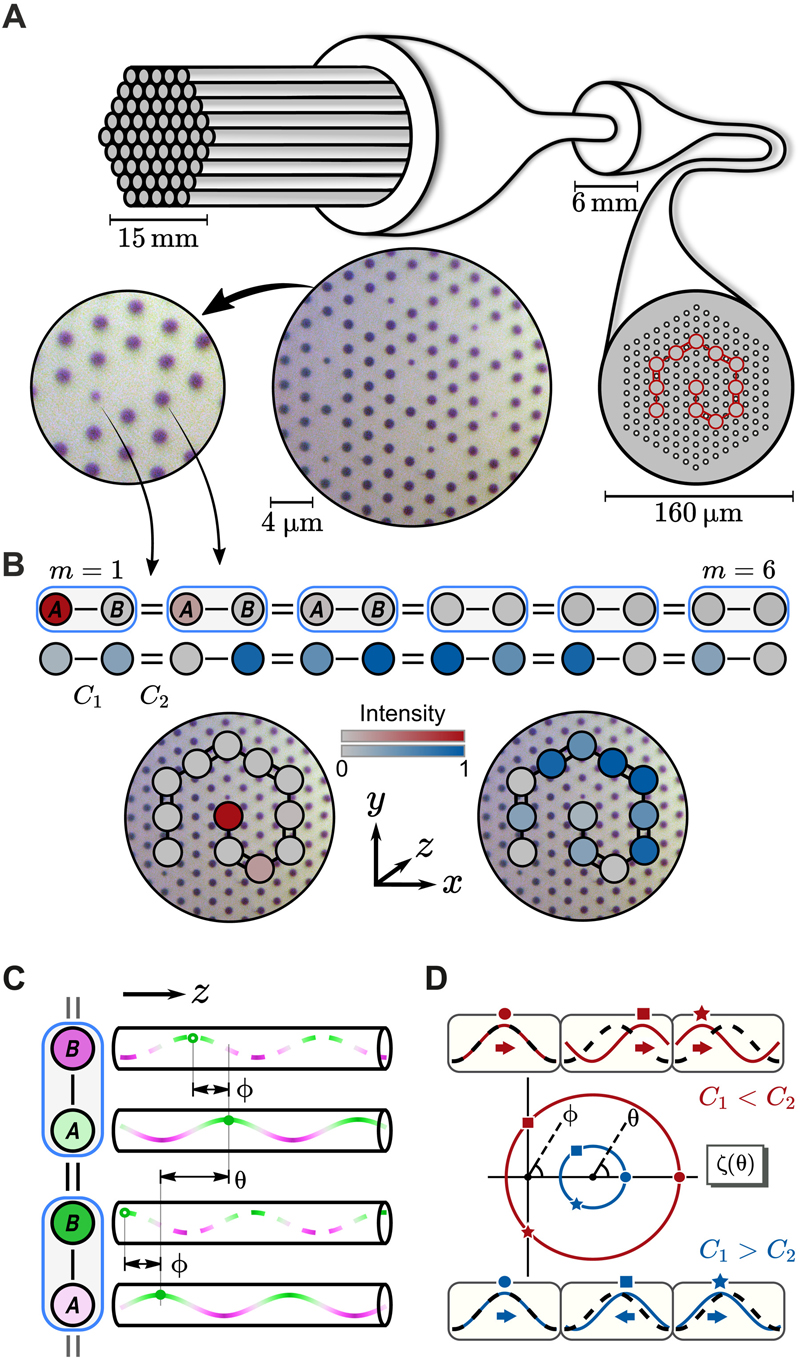| Topological states in fiber.
(A) Fiber fabrication process: Using a fiber drawing tower, stacked glass capillaries are formed into canes and then fiber. Right: The transverse structure is preserved. Middle: Optical micrograph of fiber cross section with dark air holes and lighter gray glass. Left: Three glass cores and the different size air holes between them. (B) Smaller air holes correspond to stronger intercore coupling (double bonds), and larger air holes correspond to weaker coupling (single bonds). A Su-Schrieffer-Heeger (SSH) chain (34) has alternating couplings and two cores (A and B) per unit cell (blue boxes). Its supermodes include topological edge states (top, red) and bulk states (middle, blue). The chains are wrapped into compact spirals within the fiber cross section (bottom). (C) The topological invariant ν is encoded in the phase differences (ϕ within a unit cell and θ for neighboring cells) between optical waves propagating in neighboring cores (see main text). (D) The function ζ(θ) has argument ϕ and draws a circle in the complex plane. The circle winds around the origin for C1 < C2 (topological, red) but not for C1 > C2 (trivial, blue). Boxes: Phase difference ϕ between A cores (solid) and B cores (dashed) for corresponding θ values on the circles.
Graphic courtesy of Science Advances / University of Bath. |
